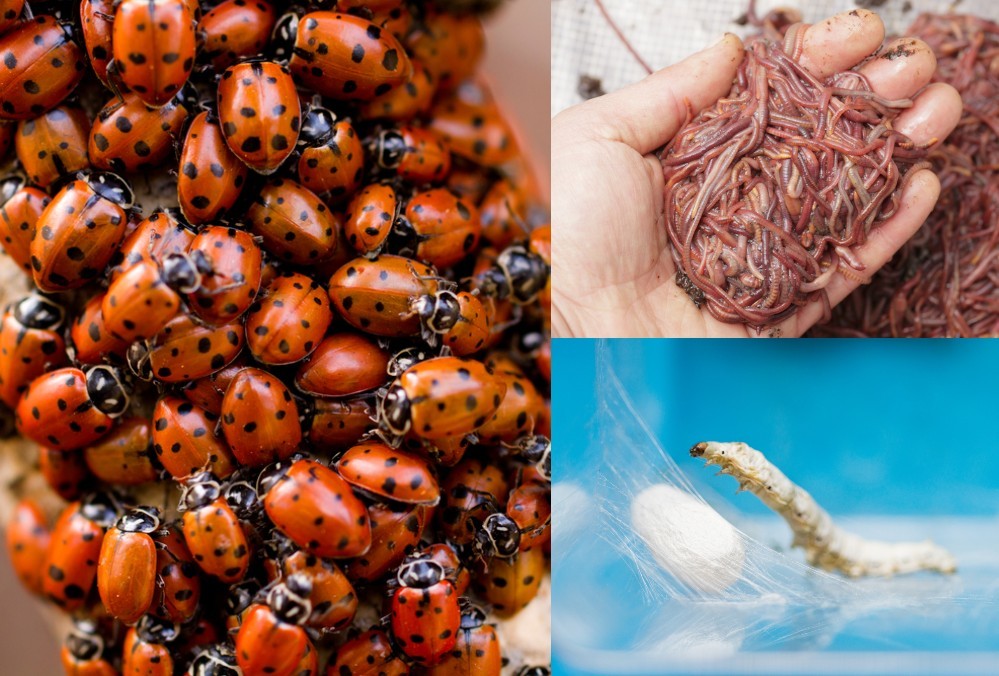
In the world of raising livestock, some of the smallest players are making the most significant impact.
Insect farming is growing in popularity, and the benefits are impressive even for casual cultivators.
It doesn’t take much money to establish a bug-based farm, and when managed correctly you can transform it into a steady source of side income.
But why would you consider welcoming more insects into your home, and what does it take to find success as an insect farmer? Let’s look closer at the facts below.
What Is Insect Farming?
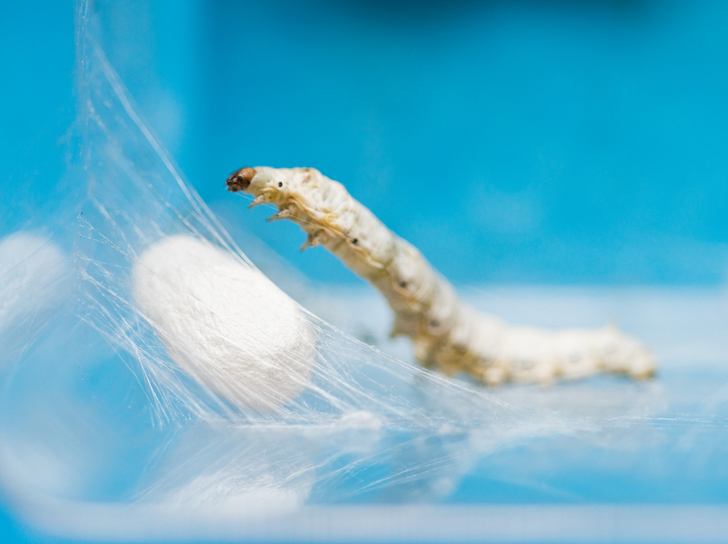
In short, insect farming is the process of raising insects intentionally for a larger purpose. This might include human consumption, pet food, or even textile production (as with silkworms).
The demand for farm-raised insects has increased dramatically in the past two years, partly because an increase in the popularity of bug-eating reptiles as pets, and because it’s becoming increasingly acceptable to add edible insects to your diet.
Bugs are more than a food fad. Instead, they are a sober reflection of the fact that global food production needs to increase over 50% by 2050 just to keep our ever-growing population fed.
Insects are a low-impact protein source that can nourish people far more efficiently than traditional forms of meat. But, not all insects are good to eat, and not all edible insects take well to being farmed. For success with treating insects as livestock, you need to know what types to focus on.
8 Uses For Home-Raised Insects
Why would you want to raise insects as livestock to begin with? It turns out that they have plenty of advantages in the following ways.
1. For Yourself
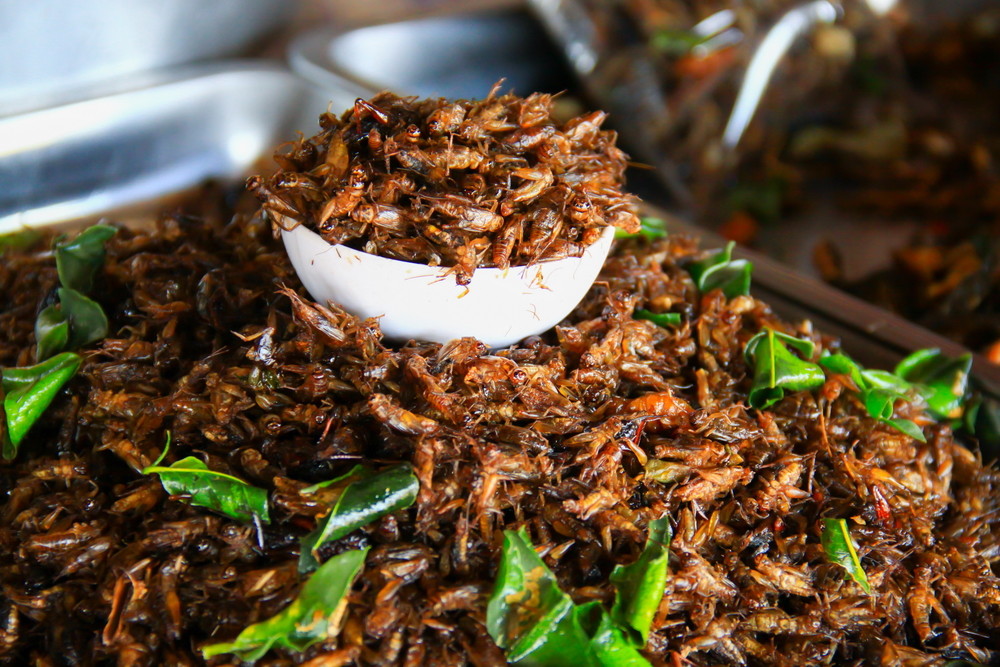
If you’re able to get past your disgust of consuming insects, you might be amazed at how beneficial they are for your health.
Bite for bite, crickets contain more protein than beef and chicken, and their fat content is the kind that boosts your beneficial cholesterol levels.
Read Next: 8 Reasons You Should Add Edible Insects To Your Diet
2. For the Environment
The UN reports that eating insects is one of the most sustainable ways to secure protein on the planet.
For every one acre of land required to produce mealworms, as many as 10 acres are needed to provide the equivalent in beef protein.
That leads to one-tenth the space requirements and greenhouse gas emissions. Likewise, insects use less water than standard livestock, and they are more efficient at converting food into body mass.
According to the Food and Agriculture Organization of the UN, crickets require six times less feed than cattle, one quarter as much as sheep, and half as much as pigs and chickens to produce the equivalent amount of protein.
3. For Your Chickens
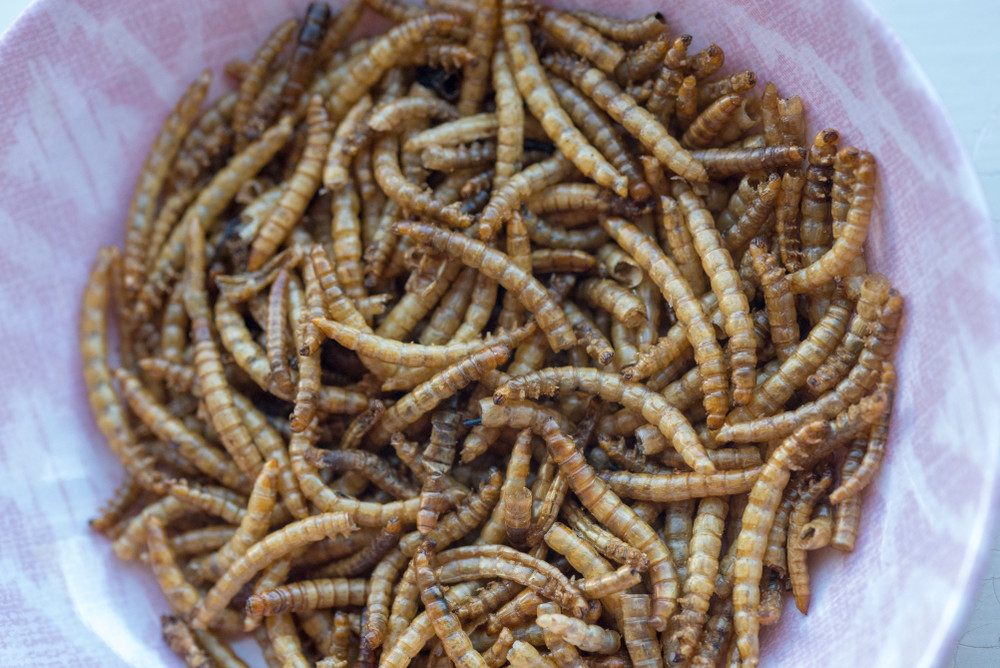
If you have a backyard flock of birds (or want to sell to those that do) breeding mealworms is the perfect way to supply your poultry with protein. Raising mealworms or crickets provides you with an easy snack to feed your chickens, especially when they’re in the middle of a molt.
And don’t exclude indoor birds. Cockatiels, cockatoos, and most types of parrots also appreciate an occasional insect snack.
4. For Your Home Food Waste
Upwards of 40% of all food in the United States is wasted, and most of that winds up in the landfill. There are few things flies love more than feasting on your food scraps, and it’s possible to put them to work as natural composters with a black soldier fly setup.
You can set up a system where you feed flies on your food scraps so that they lay their eggs in the compost, which consequently creates a maggot supply for feeding your backyard chickens. The benefits are twofold: free chicken food and a way to minimize your food scraps.
Learn the details behind building a black soldier fly nursery in the video below.
5. For Feeding Reptiles
If your lizard is the love of your life, you can ensure he gets top quality (and affordable) food by raising his meals at home. While live crickets aren’t expensive at the pet store, you’ll cut down feeding costs considerably by raising them yourself. And if your supply starts to get out of control just sell them to your pet store.
6. For Fishing Bait
Forget buying that overpriced container of earthworms before your next fishing trip; home-raised crickets or worms are an inexpensive substitute.
Just pop a bag of crickets in the freezer a few hours before your trip, and they’ll be ready for use as bait
7. For Your Garden
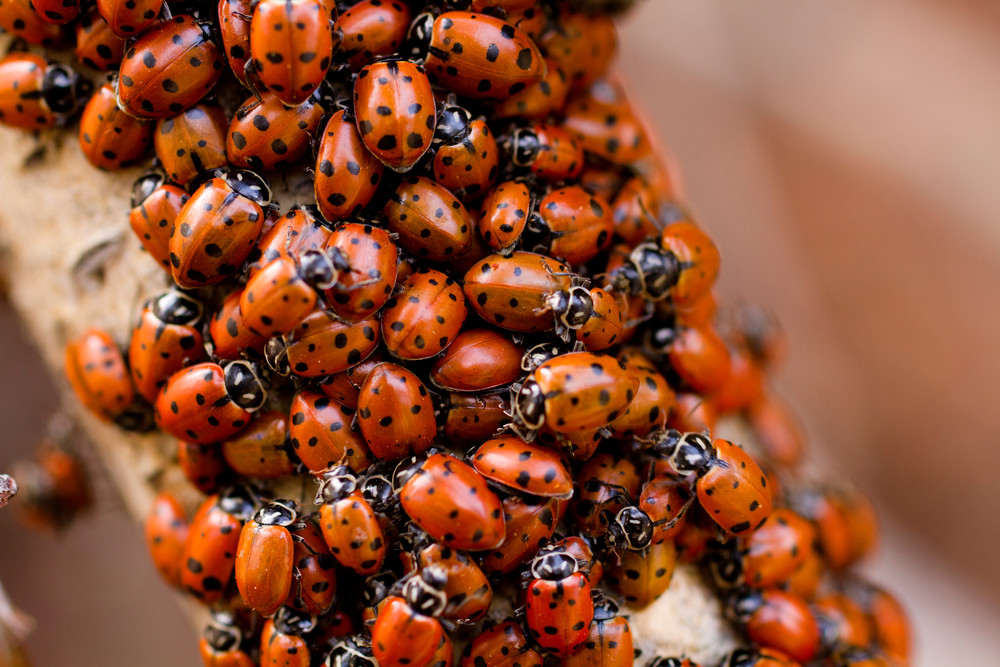
Are the aphids getting out of control on your tomato plants this season?
Consider raising ladybugs to release onto the plants. Ladybugs, lacewings, and hoverflies all adore feasting on aphids and taking steps to encourage them to inhabit your plants will help them stay healthier.
8. For Making Money
Almost all homesteaders are looking for ways to make extra income on their property, and raising insects can help you do just that. There’s minimal overhead for getting started, meaning that you can begin making money in the first few weeks.
5 Tips To Profit From Raising Insects as Livestock
While raising insects as livestock is relatively straightforward compared to other animal varieties, there are still some tips to help you get started.
1. Start Small Scale
Insects are tiny by nature, so there’s no reason to scale up your operation before you’re ready. Master the basics and get bigger over time.
2. Watch Out For Disease
Bugs often attack other bugs, and the wrong infestation can wipe out your operation. Watch out for fruit flies, and keep your operation undercover (literally) to prevent outside species from contaminating them.
3. Check Your Market Needs
Pay attention to the insect needs in your area, and you can choose the variety that makes sense for you. After all, the last thing you want if you’re the owner of thousands of crickets is to hear that your local pet store is turning down suppliers and that your region’s gardeners are desperate for more ladybugs.
4. Be Willing To Experiment
One advantage that insects have over other livestock is their short lifespans, which means that you can try something new with each generation and continuously hone your technique. This will help you achieve better results over time.
5. Advertise Locally
If people don’t know about your bug supply, they won’t think to purchase them from you. Advertise as much as you can: on Facebook, in pet stores, Craigslist, and your local newspaper. The more you get the word out, the faster you’ll move your stock along.
The Basics Behind Insect Farming
Once you’ve committed to trying to raise insects as livestock, it’s time to begin ironing out the details. The first step? Deciding which variety to start with.
6 Insect Species To Raise For Profit
Dozens of insects can be raised at home, so it’s common to be confused about where to start. Below are some common insect varieties and the ways you can begin breeding them at home.
1. Crickets:
Crickets are a preferred form of insect livestock for providing for both pet stores and human consumption. Most caged reptiles regularly eat crickets, which means a home-raised supply can be in high demand.
Though this insect is notoriously difficult to breed for non-experts, you can learn the secrets for success with resources like Cricket Breeding Made Easy and setting up a cricket breeding habitat for the magic to take place.
2. Cockroaches:
Commonly referred to as woodies, home-raised cockroaches are a convenient treat for all insect-eating pets, and they are a hardy species to start with. So long as you can keep your roaches in a consistently dark, humid location, they should thrive and provide you with a consistent supply of offspring to use or sell.
3. Mealworms:
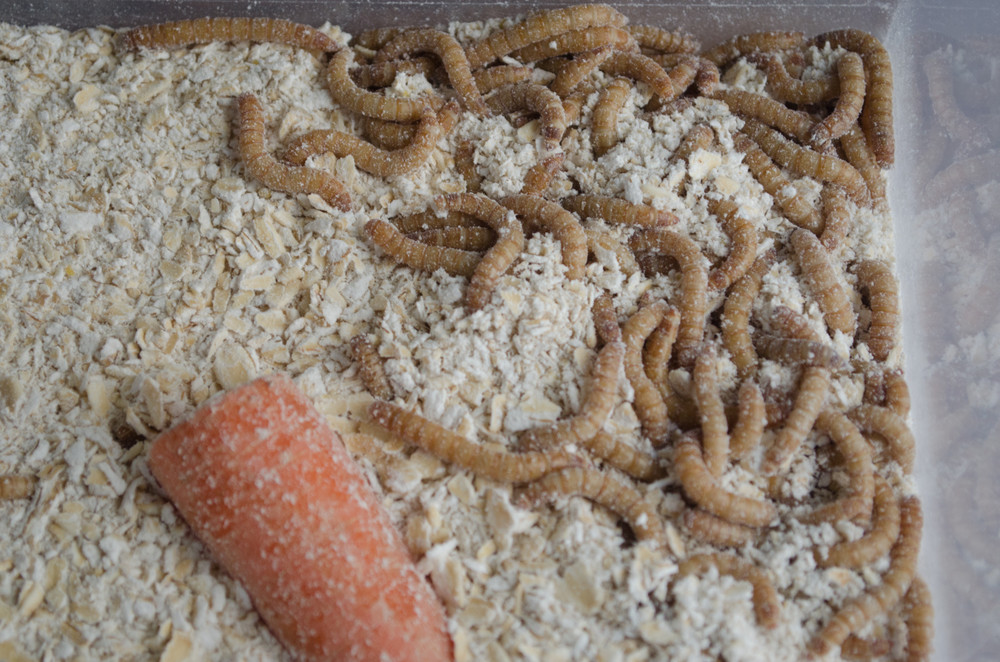
Small, low-maintenance, and quick to reproduce; what’s not to like about raising mealworms as livestock?
Instructions for getting started couldn’t be easier to follow, and you’ll need little more than three plastic containers to get started.
To promote optimal growth, plan to fill the bottom of their containers with wheat bran to serve as dinner and bedding material. You’ll need at least 60 mealworm larva to get started, and from that point, you can continue to grow and maintain the base population.
4. Red Wigglers (Worm Castings):
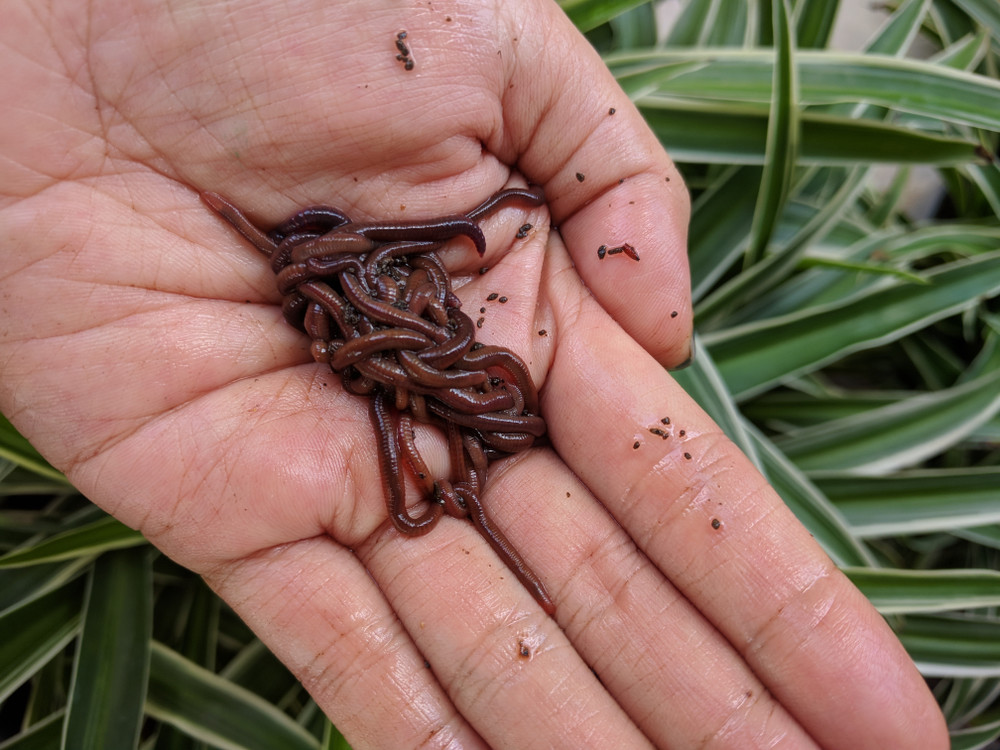
Whether you garden, fish, or raise backyard chickens, you’re sure to find plenty of uses for home-grown red wigglers and the castings they produce.
It’s easier than you think to set up a worm bin, and in a matter of weeks, your food scraps will be converted into baby worms and nutrient-rich castings (worm poop).
This high-quality compost is perfect for growing vegetables, and you can feed any extra worms to your chickens or add them to your outdoor compost pile to speed up the decomposition process.
5. Silkworms:
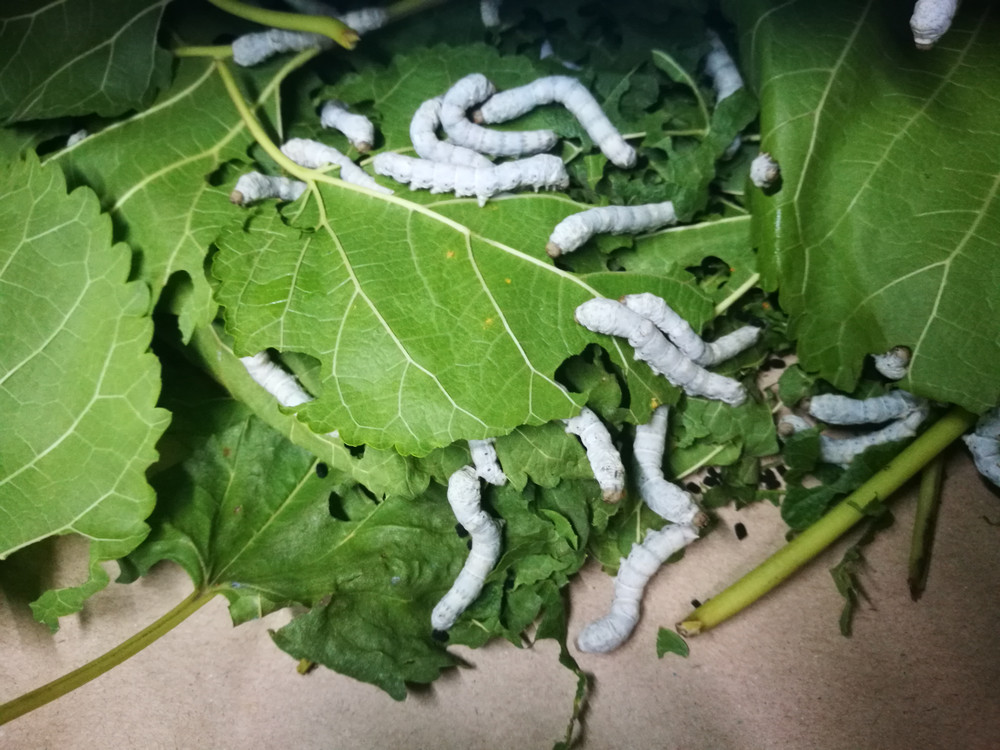
For those looking for something different, consider diving into sericulture by raising silkworms.
You’ll need a regular supply of mulberry leaves to keep this finicky species healthy, so this insect livestock project is best for those who already have established trees. It takes about 20-30 pounds of fresh leaves to supply 100 worms with food for a month, so don’t take this concern lightly!
Learn more about raising silkworms at Mother Earth News.
6. Ladybugs:
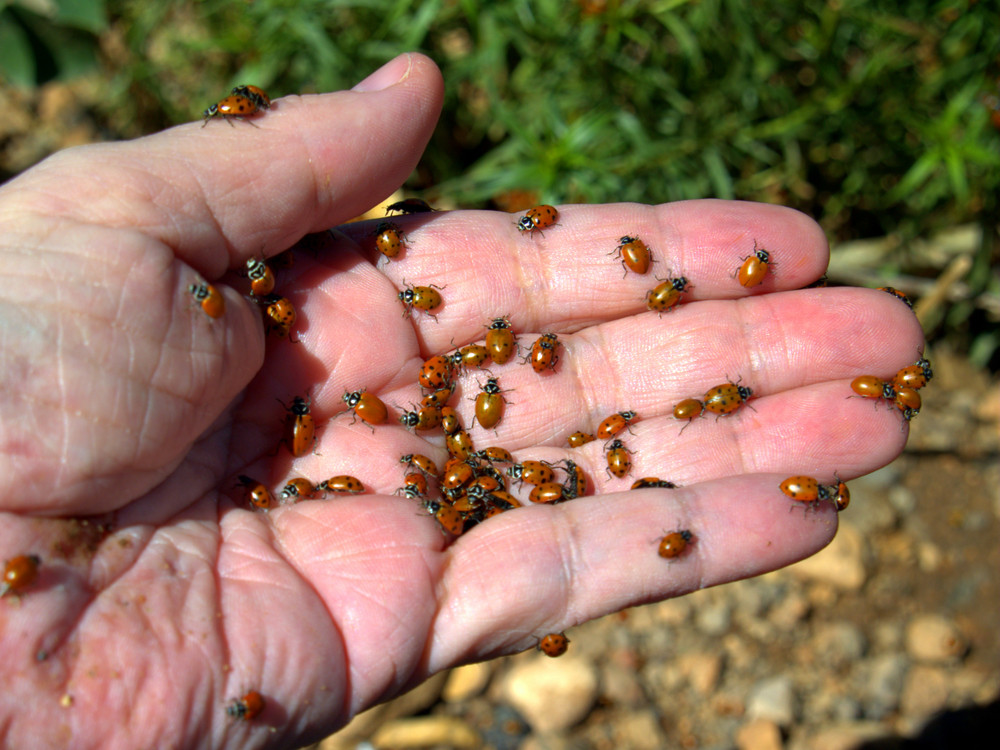
This scarlet-hued garden staple is as fun to raise as it is to release outdoors. You need only a simple artificial habit to keep this species content, though you’ll need to provide a steady food supply to keep them thriving beyond a few weeks.
You’ll need a clear plastic container with plenty of ventilation, and a damp paper towel to keep things humid. Sticks and leaves provide habit space for the insects to lay eggs, and a cotton ball soaked in honey water serves as a substitute food supply until you release your beetles back to the aphids.
Release the beetles and any unhatched eggs into the garden every few weeks, and you’ll start to increase its overall beneficial bug population.
Raising insects as livestock can benefit your diet, your wallet, and the environment. Commit to understanding the world of invertebrates a little better today, and you might be surprised how rewarding the process can be.
Still not sure you want to raise and eat insects? Our article on the reasons why we should all consider adding edible insects to our diets might convince you otherwise.
